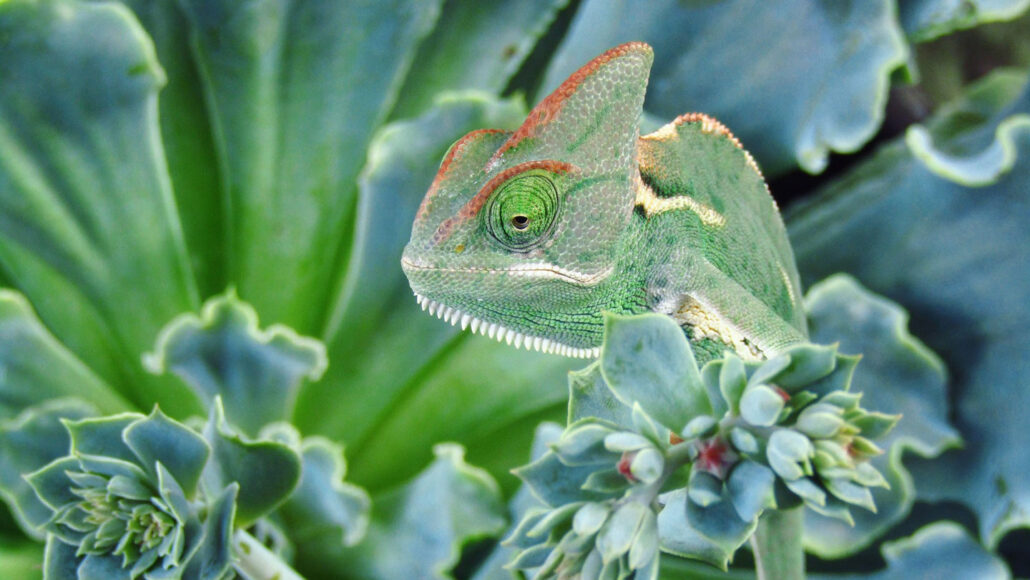application: A particular use or function of something.
arid: A description of dry areas of the world, where the climate brings too little rainfall or other precipitation to support much plant growth.
camouflage: Hiding people or objects from an enemy by making them appear to be part of the natural surroundings. Animals can also use camouflage patterns on their skin, hide or fur to hide from predators.
cell: (in biology) The smallest structural and functional unit of an organism. Typically too small to see with the unaided eye, it consists of a watery fluid surrounded by a membrane or wall. Depending on their size, animals are made of anywhere from thousands to trillions of cells. Most organisms, such as yeasts, molds, bacteria and some algae, are composed of only one cell.
chameleon: A type of lizard known for its ability to change the color of its skin.
hue: A color or shade of some color.
insect: A type of arthropod that as an adult will have six segmented legs and three body parts: a head, thorax and abdomen. There are hundreds of thousands of insects, which include bees, beetles, flies and moths.
lizard: A type of reptile that typically walks on four legs, has a scaly body and a long tapering tail. Unlike most reptiles, lizards also typically have movable eyelids. Examples of lizards include the tuatara, chameleons, Komodo dragon, and Gila monster.
organ: (in biology) Various parts of an organism that perform one or more particular functions. For instance, an ovary is an organ that makes eggs, the brain is an organ that makes sense of nerve signals and a plant’s roots are organs that take in nutrients and moisture.
organism: Any living thing, from elephants and plants to bacteria and other types of single-celled life.
predator: (adjective: predatory) A creature that preys on other animals for most or all of its food.
real time: A term that connotes immediacy; something is being studied, recorded and/or reported at the very time it is happening.
reptile: Cold-blooded vertebrate animals, whose skin is covered with scales or horny plates. Snakes, turtles, lizards and alligators are all reptiles.
species: A group of similar organisms capable of producing offspring that can survive and reproduce.
sun: The star at the center of Earth’s solar system. It is about 27,000 light-years from the center of the Milky Way galaxy. Also a term for any sunlike star.
territorial: (in biology) An adjective for organisms that try to keep others of their species away from an area they control.
trait: A characteristic feature of something. (in genetics) A quality or characteristic that can be inherited.
translucent: The property of letting light through, but not being transparent. Usually, things viewed through a translucent material (such as frosted window glass) appear as hazy shapes with no detail.
unique: Something that is unlike anything else; the only one of its kind.

